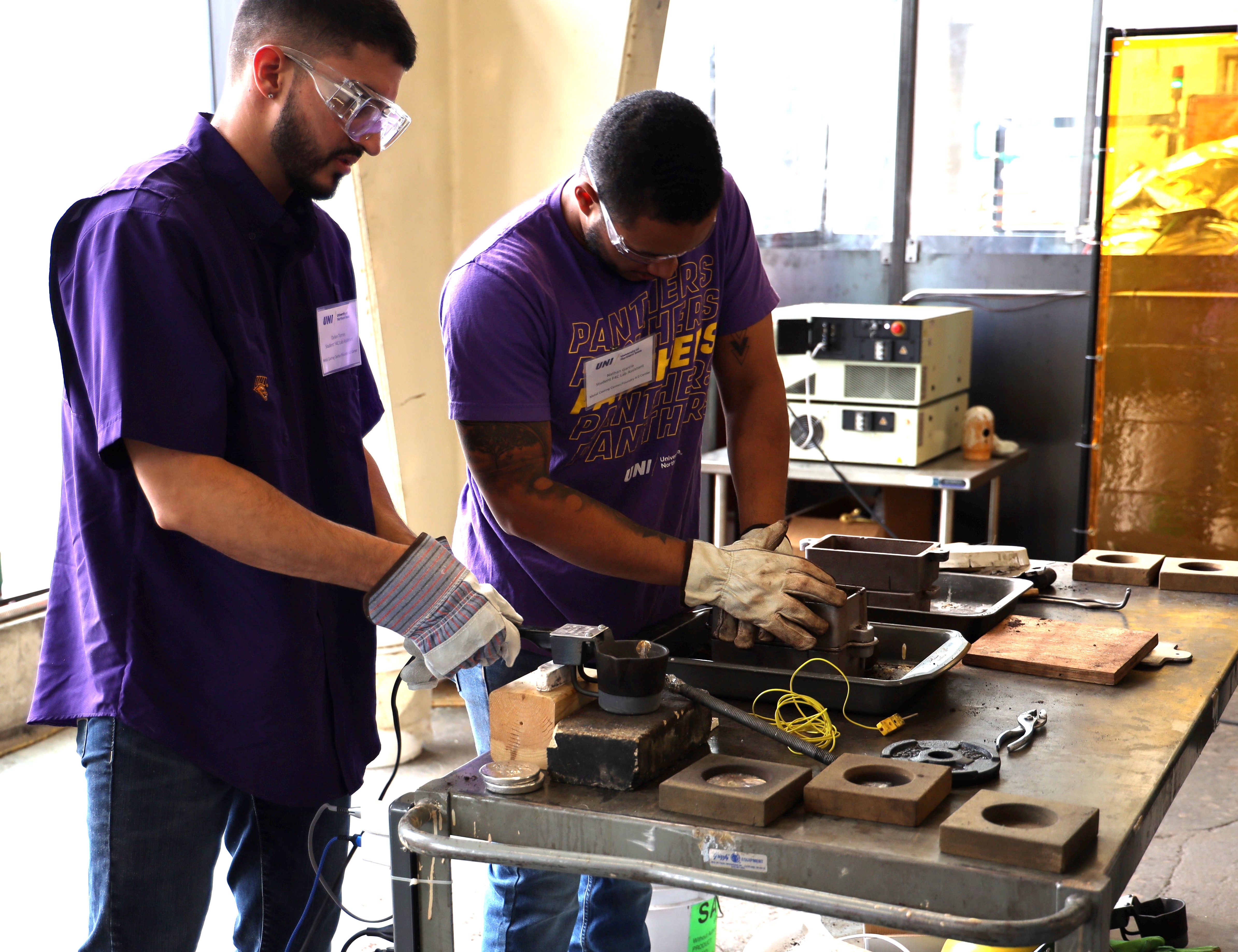Research & Development
Highlights of our research and development include:
- Robotic operations of traditionally labor-intensive foundry practices including gating and riser removal of ferrous and non-ferrous alloys
- Investment casting shell building and burnout, along with robotic 3D printing
- A variety of additive manufacturing (AM) methods such as binder jet printing of sand for molds and cores, binder jetting of polymethyl methacrylate powder for expendable pattern printing, photopolymer resin printing utilizing both the stereolithography (SLA) process and digital light processing (DLP), and the popular fused filament fabrication (FFF).
Foundry 4.0 in Action
Robots, 3D printers and sensors built by undergraduate computer science students generate a tremendous amount of data that is stored on a centralized database. This data is used in research efforts to optimize foundry processes through the assistance of machine learning algorithms.
Additional software capabilities at the Foundry 4.0 Center include multiple platforms for foundry process simulation, offline robotic programming software and a variety of computer aided design (CAD) packages.

Developments in Smart Manufacturing
The Foundry 4.0 Center has undergone significant changes in recent years to support smart manufacturing. The Metal Casting Center foundry laboratory is designed around information technology that optimizes the process to ensure quality castings. Every process within the foundry provides data to make smart decisions.

